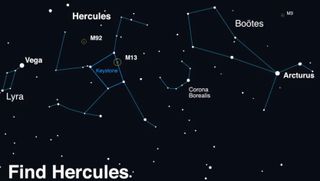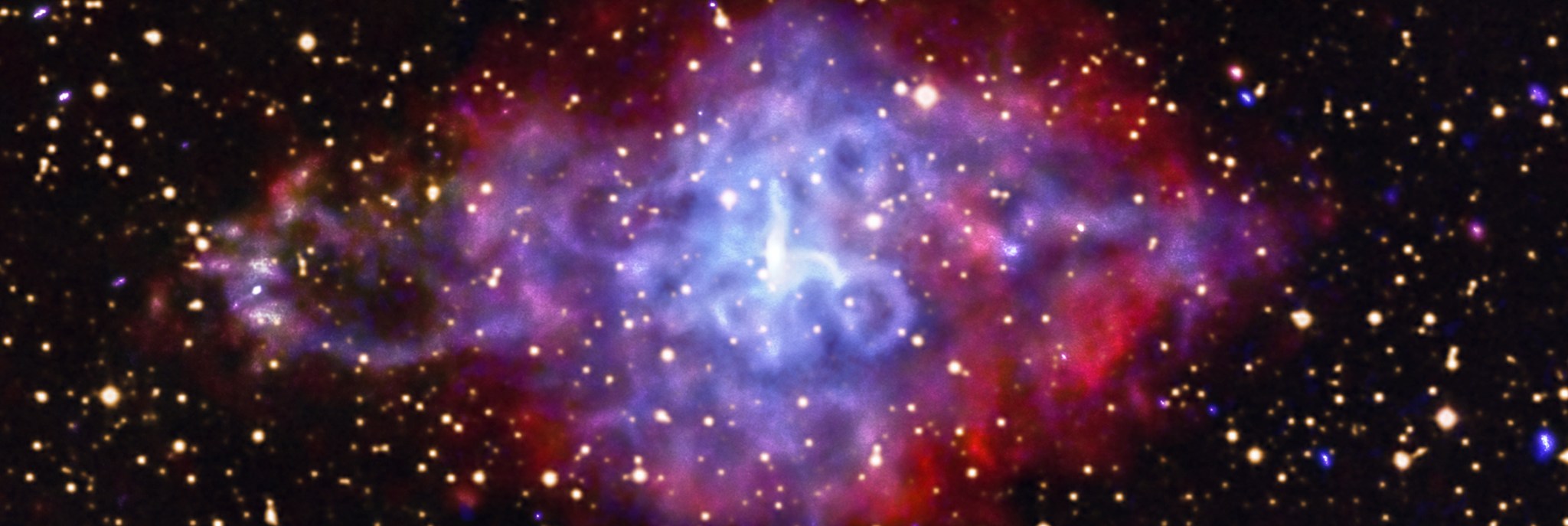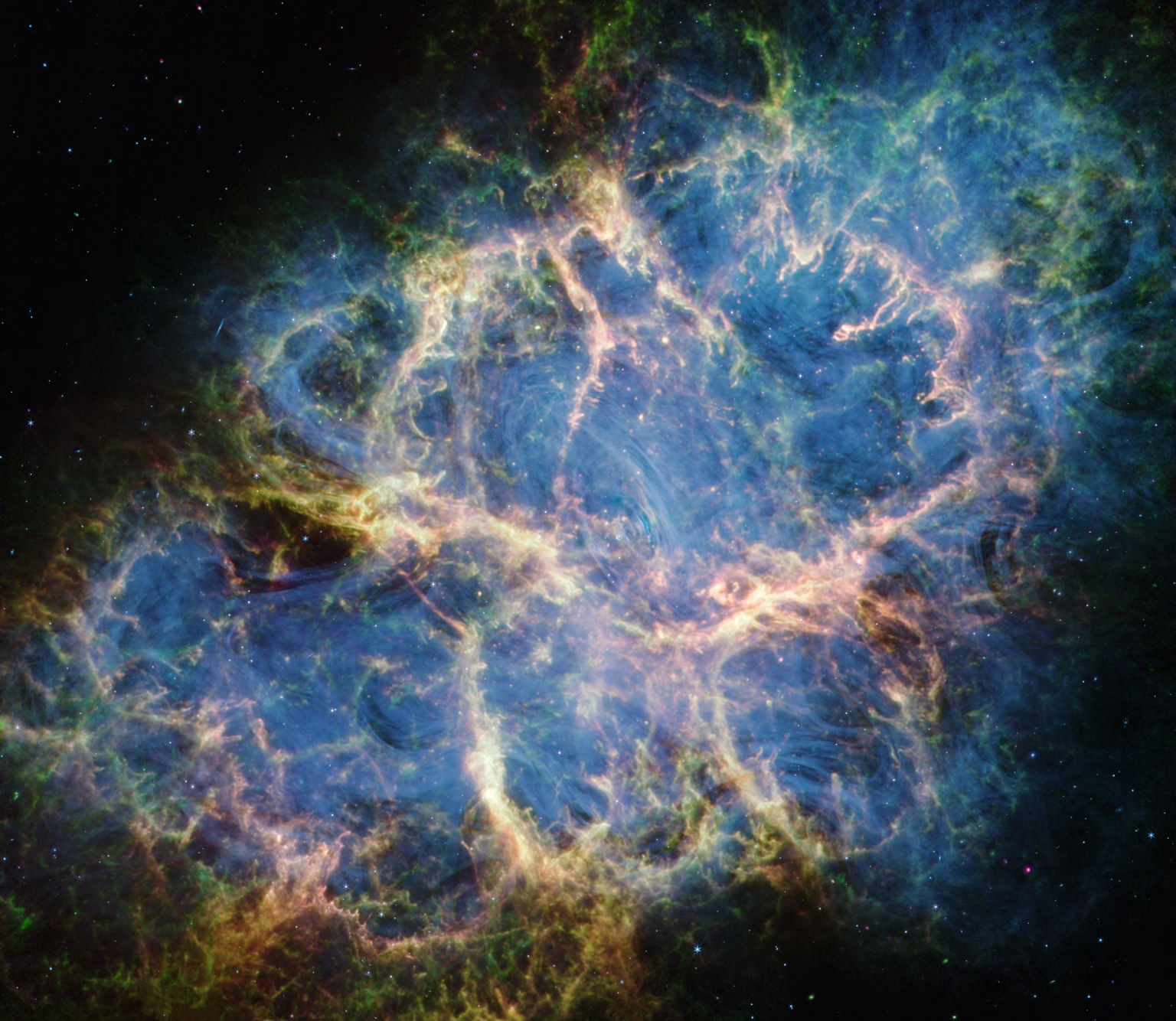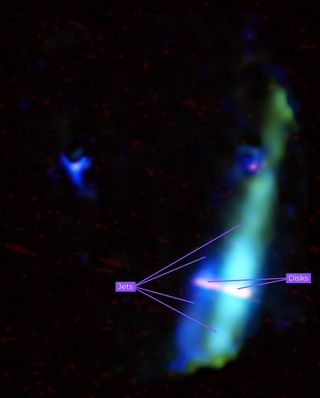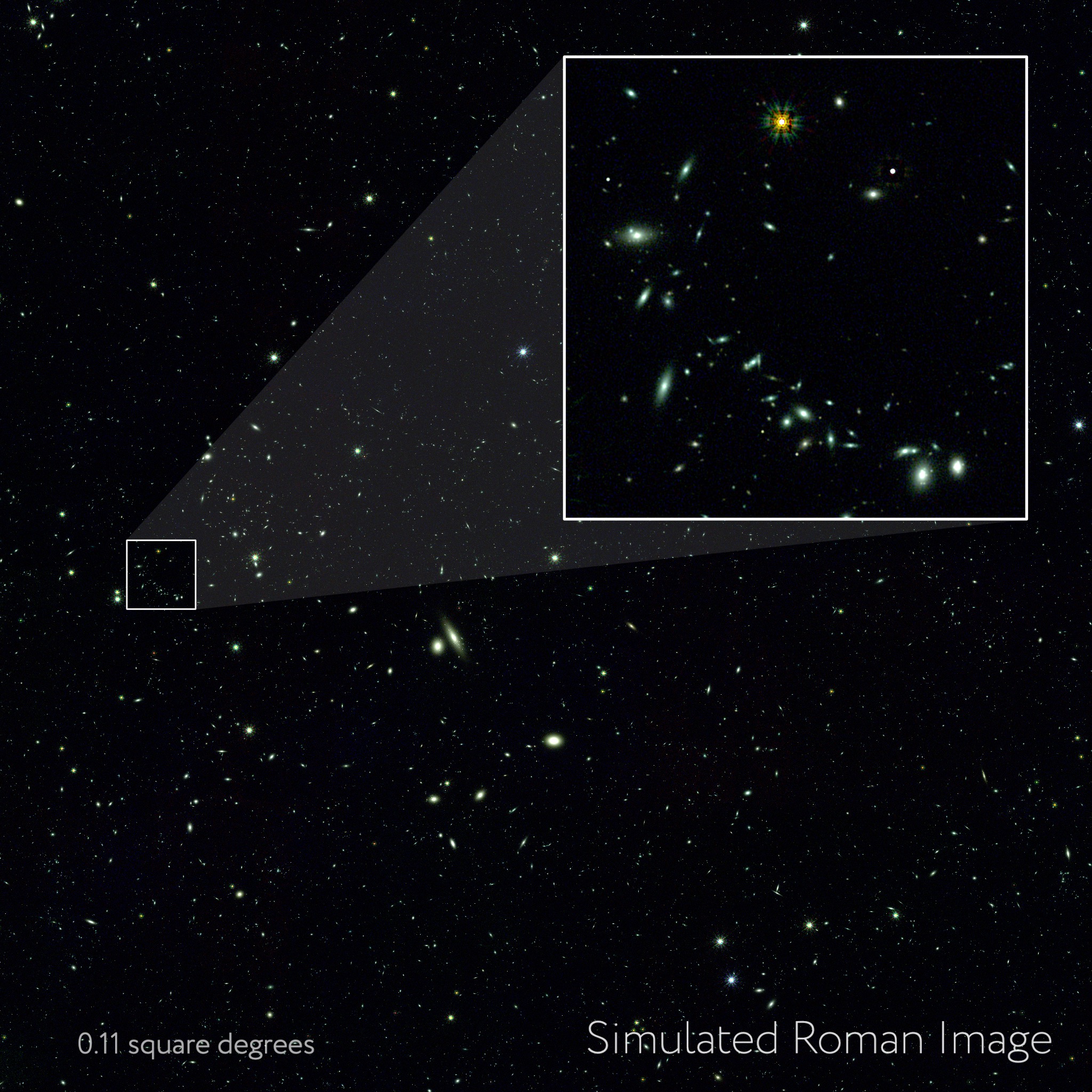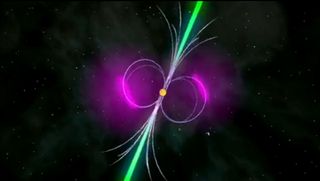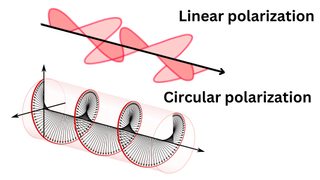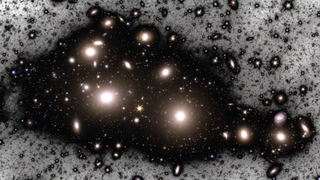If you’ve always wanted to witness a stellar explosion, your time is about to come. T Coronae Borealis, also known as T CrB (pronounced tee-core-bore) or the “Blaze Star,” is on the precipice of a massive explosion — one that should be visible from Earth. According to calculations by Brad Schaefer, Professor Emeritus of Astronomy at Louisiana State University, along with data from amateur astronomers affiliated with the American Association of Variable Star Observers (AAVSO), the nova should occur within a few months of May 2024. T CrB is a binary…
Read MoreTag: Stars
NASA’s Chandra Peers Into Densest and Weirdest Stars
Supernova remnant 3C 58. X-ray: NASA/CXC/ICE-CSIC/A. Marino et al.; Optical: SDSS; Image Processing: NASA/CXC/SAO/J. Major The supernova remnant 3C 58 contains a spinning neutron star, known as PSR J0205+6449, at its center. Astronomers studied this neutron star and others like it to probe the nature of matter inside these very dense objects. A new study, made using NASA’s Chandra X-ray Observatory and ESA’s XMM-Newton, reveals that the interiors of neutron stars may contain a type of ultra-dense matter not found anywhere else in the Universe. In this image of 3C…
Read MoreInvestigating the Origins of the Crab Nebula With NASA’s Webb
6 Min Read Investigating the Origins of the Crab Nebula With NASA’s Webb This image by NASA’s James Webb Space Telescope’s NIRCam (Near-Infrared Camera) and MIRI (Mid-Infrared Instrument) shows different structural details of the Crab Nebula. New data revises our view of this unusual supernova explosion. A team of scientists used NASA’s James Webb Space Telescope to parse the composition of the Crab Nebula, a supernova remnant located 6,500 light-years away in the constellation Taurus. With the telescope’s MIRI (Mid-Infrared Instrument) and NIRCam (Near-Infrared Camera), the team gathered data that…
Read MoreThis long-studied star is actually a stellar duo: ‘We were absolutely stunned’
Shrouded in a dense cloud of gas and dust, a young star in the constellation Ophiuchus that astronomers have studied for decades has been found to be a duo. It would also appear that both members of the pair are encircled by a disk of material within which planets may have just begun coalescing. The twin stars, which reside about 400 light-years from Earth in the WL 20 group, are less than a million years old and appear to have pushed away the billowy orange clouds within which they formed,…
Read MoreNASA’s Roman Mission Gets Cosmic ‘Sneak Peek’ From Supercomputers
Researchers are diving into a synthetic universe to help us better understand the real one. Using supercomputers at the U.S. DOE’s (Department of Energy’s) Argonne National Laboratory in Illinois, scientists have created nearly 4 million simulated images depicting the cosmos as NASA’s Nancy Grace Roman Space Telescope and the Vera C. Rubin Observatory, jointly funded by NSF (the National Science Foundation) and DOE, in Chile will see it. Michael Troxel, an associate professor of physics at Duke University in Durham, North Carolina, led the simulation campaign as part of a…
Read More‘Super’ Star Cluster Shines in New Look From NASA’s Chandra
Star Cluster Westerlund 1. X-ray: NASA/CXC/INAF/M. Guarcello et al.; Optical: NASA/ESA/STScI; Image Processing: NASA/CXC/SAO/L. Frattare Westerlund 1 is the biggest and closest “super” star cluster to Earth. New data from NASA’s Chandra X-ray Observatory, in combination with other NASA telescopes, is helping astronomers delve deeper into this galactic factory where stars are vigorously being produced. This is the first data to be publicly released from a project called the Extended Westerlund 1 and 2 Open Clusters Survey, or EWOCS, led by astronomers from the Italian National Institute of Astrophysics in Palermo. As part of EWOCS,…
Read MoreScientists find slowest spinning ‘radio neutron star’ — it breaks all the dead-star rules
Astronomers have discovered the slowest spinning radio wave-blasting neutron star ever seen; it takes almost an hour to complete a full rotation. That may sound rather fast, but these dead stars are known to spin so rapidly that some experience 700 full turns every second. Even the most leisurely of the about 3,000 radio-emitting neutron stars, or “pulsars,” discovered so far complete a full rotation in a second or so. This ultra-leisurely neutron star, however, designated ASKAP J1935+2148 and located 16,000 light-years from Earth, is emitting radio light at a rate…
Read MoreMassive, magnetic stars beyond the Milky Way detected for the 1st time
For the first time, astronomers have detected the magnetic fields of massive, blazingly hot stars outside our galaxy. They’re stars that actually live in our galactic companions, the Large Magellanic Cloud (LMC) and the Small Magellanic Cloud (SMC). Discovering stellar magnetism in these satellite galaxies of the Milky Way, both of which have a large population of young stars, offers scientists a unique chance to study actively forming stars. It could also answer the question of how much mass a star can pile on before it loses stability. Magnetism is…
Read MoreEuclid space telescope finds 1.5 trillion orphan stars wandering the Perseus cluster (images)
Using the Euclid space telescope, scientists have discovered a staggering 1.5 trillion orphan stars drifting through a massive cluster of thousands of galaxies, one of the largest structures in the cosmos. These orphan stars, ripped free from their own galaxies, are filling the space between the galaxies of the Perseus cluster with ghostly blue light. This so-called “intracluster” light is so faint that it is many thousands of times darker than the night sky over Earth. By observing this intracluster light in the Perseus cluster, which is located 240 million…
Read MoreEnchanting new Hubble Telescope image reveals an infant star’s sparkle
Have you ever wondered what our sun looked like when it was young? Although we know the sun to be an unchanging, and even predictable source, of light in our skies, its youthful version some 4.6 billion years ago was quite active. During those formative years, our star spewed solar flares every week or so, despite shining only about a third as bright as it does now. Scientists also suspect that even though the early sun exhibited a dim stature, it kept the then-young Earth warm enough for life to…
Read More